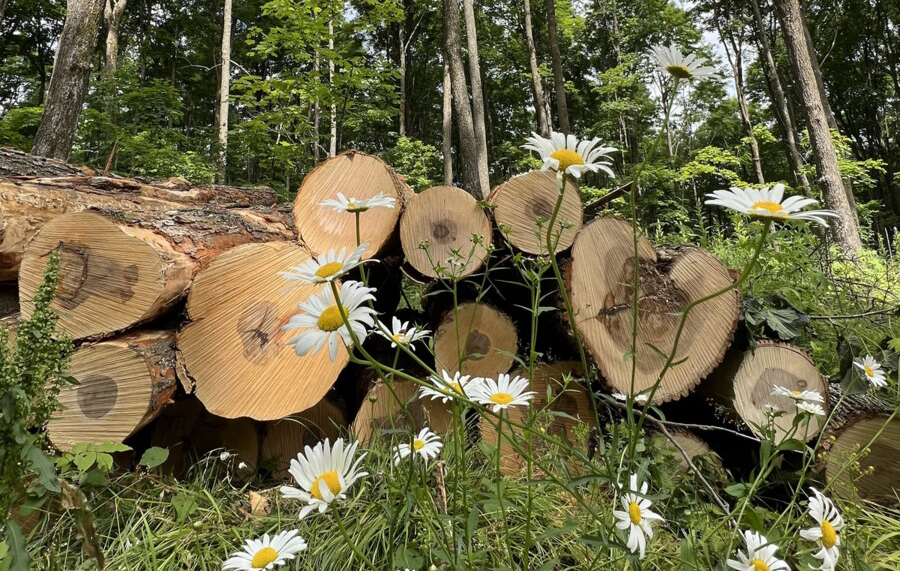wd connor defined sustainable forestry for the U.S.
For many today, sustainability is an overused buzzword to gain cover for “greenwashing”. At WD sustainable hardwood flooring is now, and has been, a singular mission. We are so proud of your history and focus on sustainability that we named our company after WD Connor, the great grandfather of sustainable forestry. The days of the of Dr. Suess’s Lorax are a tale of yesteryear. Today our products are sourced form Managed Forests that have a continued revolving growing stock of varying age classes, and our forests have more standing timber today than it did 100 years ago.
Learn more about our history.
our facility is a 100% use facility with zero waste product
Just some of the bi-products we produce are utilized for bio-fuel and animal bedding. We also carry this forward even further by using sustainably-sourced materials in our finishing process with Rubio Monocoat – a finish derived from rapidly renewable sources like linseed oil and bees’ wax. We even clean our machines with a product sourced from the offal product produced by distilleries making gin and whiskey.
certified and recognized for our standards
We’re proud to be certified by the Sustainable Forestry Intiative (SFI) – an organization with a mission to protect our planet. We’ve also been recognized for our preservation and conservation efforts, including being honored by the State of the Great Lakes conference our contributions to the Great Lakes ecosystem.

helping create industry standards
For over two decades, WD Flooring has played a pivotal role in collaborating with scholars, scientists, and wood product specialists to establish the protocols for carbon sequestration measurements, carbon storage metrics, and the establishment of Environmental Product Declarations (EPDs) for both our company and the broader hardwood flooring industry. Through these efforts, WD Flooring has not only advanced industry standards but has also positioned hardwood flooring as the gold standard for sustainable building materials. We take pride in our commitment to environmental stewardship and innovation, helping to ensure that our products contribute positively from cradle to grave.
see the full EPDs for solid wood and engineered flooring:
the smallest carbon footprint, with less cost
An analysis by NWFA found wood has a lower carbon footprint than any other flooring material. And, not only is it better for the environment, but the study also showed wood flooring has one of the lowest costs per square foot over its life cylce – costing you less than carpet, laminate, and sheet vinyl. Plus, it just looks better.
flooring global warming potential
9.2
solid wood surfaces
9.2
engineered wood
64.3
luxury vinyl tile & plank
26-432
carpet tile & broadloom
flooring life cycle cost per sq. ft
$1.01
solid wood surfaces
$1.05
engineered wood
$1.76
luxury vinyl tile & plank
$1.77
carpet tile & broadloom
GWP source: National Hardwood Flooring Association https://nwfa.org/environment/ • GWP impact data was taken from industry-averaged EPDs in all flooring categories except Carpet Tile and Broadloom Carpet, which are not available. Carpet impact data was collected from a search of publicly available product-specific EPDs. GWP impact data is presented in kg of C02 equivalent gases per square meter of flooring.
Life cycle source: National Hardwood Flooring Association https://nwfa.org/life-cycle-cost-analysis-lcca/ Costs per year are the life cycle costs for each respective material divided by the length of the study period (75 years).

